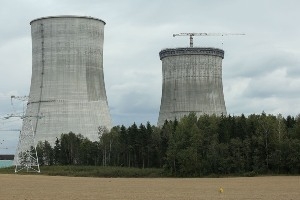Ru
|
Eng
IAEA’s SEED mission to visit Belarusian nuclear power plant in January 2017
01.11.2016

A Site and External Events Design (SEED) mission of the International Atomic Energy Agency (IAEA) is scheduled to visit the Belarusian nuclear power plant in January 2017, BelTA learned from materials prepared for a media tour of the Volgodonsk-based enterprise Atommash of the Russian company AEM Technologies (part of Atomenergomash, which is the mechanical engineering division of the Russian state corporation Rosatom).
According to the source, Belarus mentioned plans to invite a SEED mission back in 2014. Negotiations are underway to arrange a visit of IAEA representatives to the construction site of the Belarusian nuclear power plant. A preliminary IAEA mission was in Belarus in July 2016, during which the draft scope of the SEED mission was discussed. The mission itself is expected to arrive in January 2017.
A number of stress tests of the Belarusian nuclear power plant will be carried out by the end of the year to test the facility’s resilience to extreme situations. The safety of the nuclear power plant during extreme situations will be analyzed. Consequences of natural phenomena will be theoretically predicted like various combinations of floods, extreme weather conditions, external impacts, and the loss of external power.
Since the construction process started, as much as 114,800 tonnes of reinforcement bars has been installed (73% of the total volume) and 732,000m3 of concrete has been poured (62% of the total volume). At present work is being done at 116 installations of the Belarusian nuclear power plant. Twenty-four Belarusian contractors and ten Russian ones are employed to build the nuclear power plant. About 5,200 construction workers are now busy building the facility.
The Belarusian nuclear power plant is a project to build a VVER-1200 type nuclear power plant 18km away from Ostrovets, Grodno Oblast. The BelNPP will have two power-generating units with the total output capacity of up to 2,400MW (2x1,200MW).
BELNPP: NEWS FROM CONSTRUCTION SITE
23.07.2024
11.07.2024
28.06.2024
06.06.2024
04.06.2024
04.06.2024
03.06.2024
24.05.2024
23.05.2024
03.05.2024













